In this article, you will learn what are different welding tools and equipments? explained with pictures. Download the PDF file of this article at the end.
Welding Tools and Equipments
As a beginner, you probably wonder how you can get started with the welding process. Welding can be a difficult task for beginners. Performing a precise welding process requires skill, technique, and a lot of welding tools and equipments.
You may have heard that welding is quite expensive, but in reality, there are only a few essential welding tools and equipments that you will use on a regular basis. In addition to basic tools, sometimes you need tools you haven’t heard of.
Therefore, we aim to introduce you to almost all welding tools that should not be missing from any welding workshop. We’ve covered everything from security to basic equipment and essentials, you have everything you need here. So let’s look at the different types of welding tools and equipments one by one.
Welding Tools
The common welding tools used for gas welding purposes are as follows:
- Spanner
- Hammer
- Pliers
- Chisel
- Tongs
- Cylinder key
- Wire brush
- Clamps
- Angular grinder
- Spark lighter
- Try square
- Tip cleaner
- Files
- Centre punch
- Scale and weld-gauge
- Steel tape
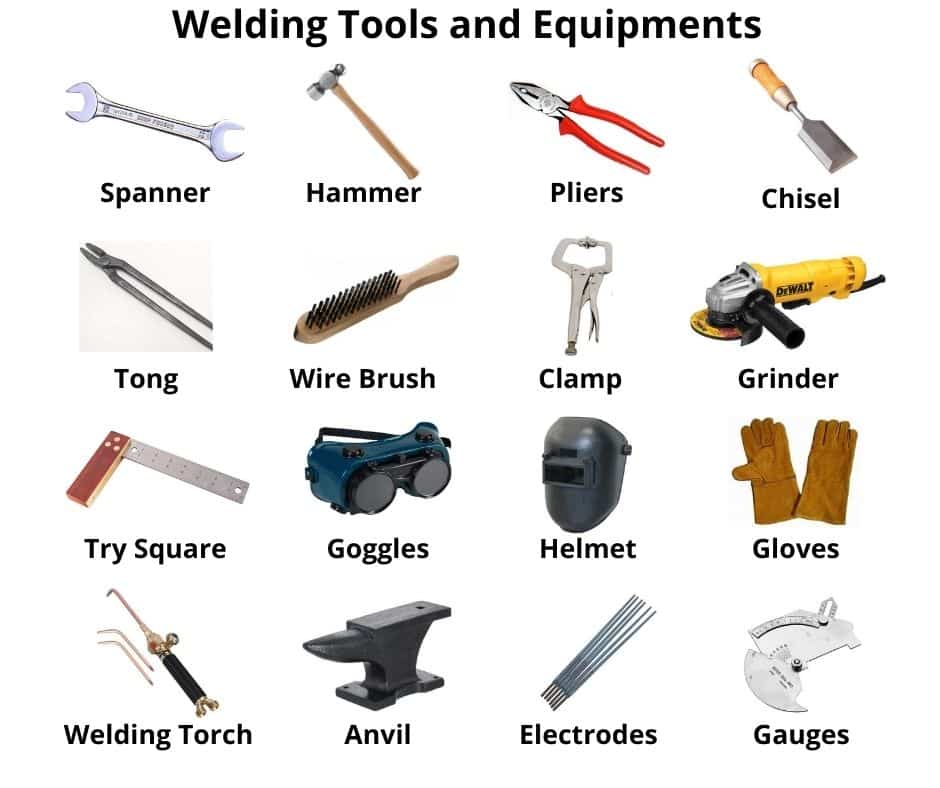
#1 Spanner
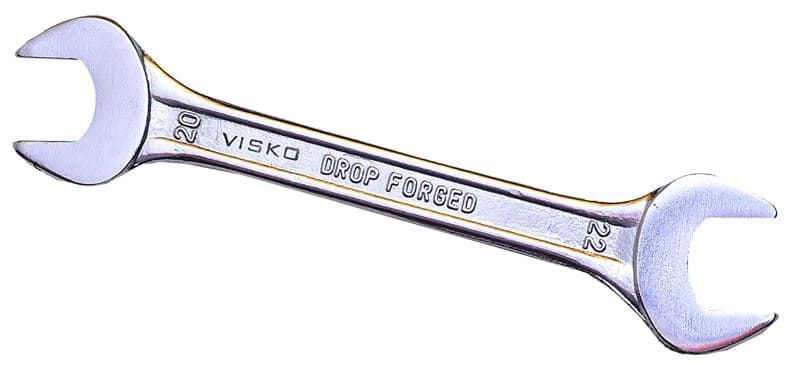
Spanners are generally used for tightening or loosening various fasteners. These are designed with drop-forge steel or carbon steel. But in welding, a double-ended spanner is used for tightening and opening the nuts of the welding apparatus and job.
#2 Hammer
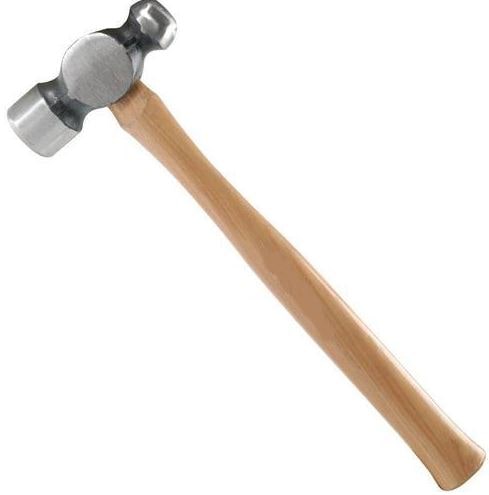
Welding hammers are essential tools used for chipping to remove slab-coating from the weld area. It is used for shaping the job. Normally a 500 grams hammer is used for the purpose. There are three types of hammers – ball pane, cross pane, and straight one. For large-sized jobs, a Sledgehammer may be used.
#3 Pliers
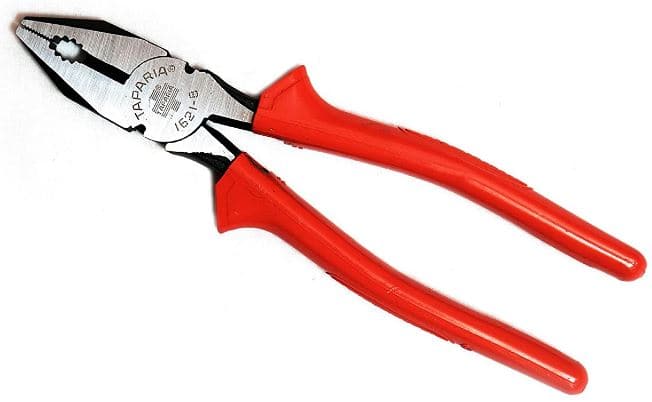
Welding pliers are specially designed to effectively remove welding spatter. The multiple jaws of the piler are used to pull the wire and install the tips and nozzles.
#4 Chisel
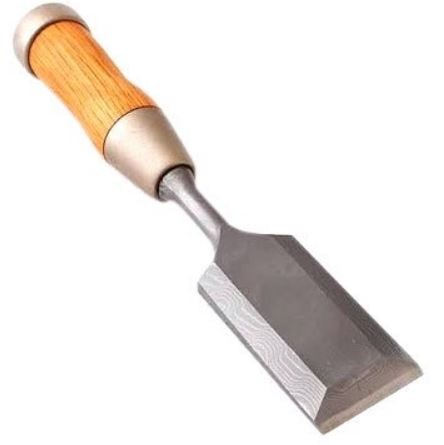
Normally, chisels are used to cut flat, round, or angled iron and cut sheets of thick metal. They are also used to remove unnecessary metal from a work surface by cutting it into small pieces. But in welding, It is used for cutting the jobs and for cleaning the slag, spatter, and surplus metal from the job after welding.
#5 Tongs
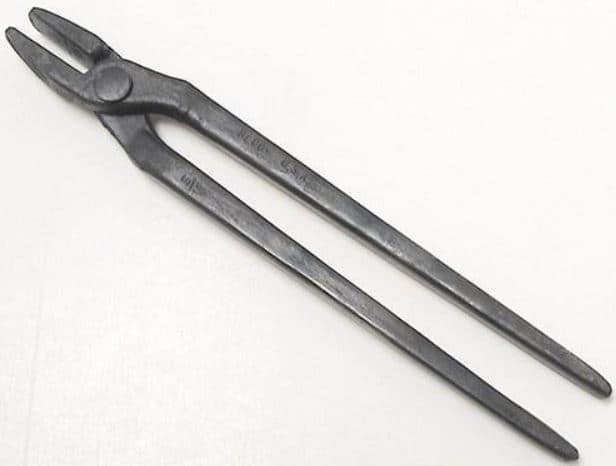
Tongs are hand tools used by blacksmiths to lift and hold hot weld pieces of metal. They are usually made of wrought iron or steel and are better than pliers or vice grips. These are available in different sizes and shapes which are intended to hold the job while welding.
#6 Cylinder Key
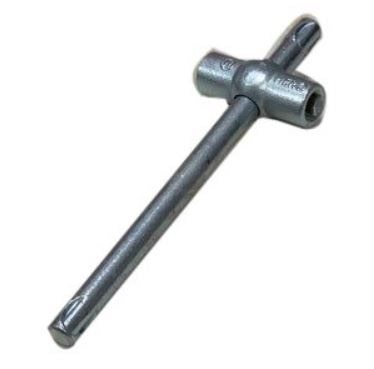
It is used for opening and tightening the spindle valve of the gas cylinder.
#7 Wire Brush
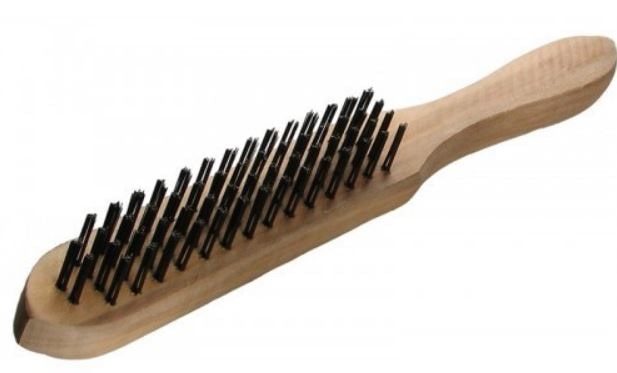
It is used for cleaning the welding surface before and after welding. It consists of steel wires and is made of stainless steel. Keep in mind that in welding, always use a brush with stainless steel bristles and a chipping hammer made of stainless steel.
#8 Clamps
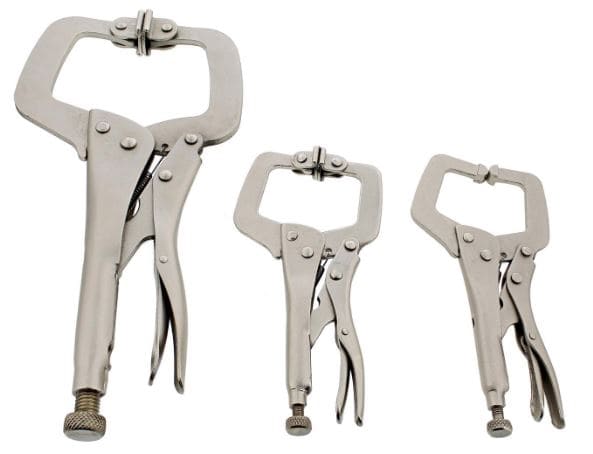
Welding clamps are sheets of metal that temporarily hold two parts of material tightly together. Welding clamps permit you to securely hold your workpiece, so the operator will produce a tighter joint.
This makes it easy to run the arc and join the pieces together without worrying about moving sheets. These types of clamps are generally available in varieties of sizes and shapes.
#9 Angular Grinder
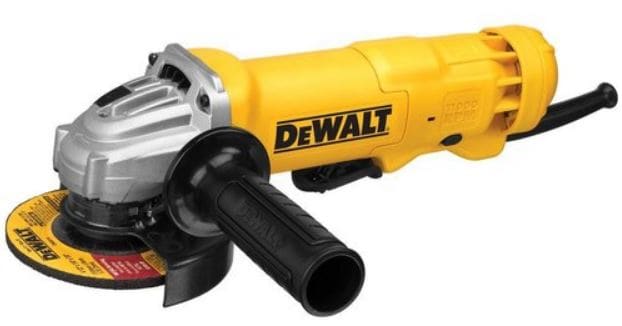
Angular grinders are commonly seen in metal fabrication and some metal shops. They are types of handheld power tools attached to consumable stone discs or blades. These discs spin at high speed to grind, cut or give a smooth finishing touch to weld metal.
Read Also: All about the different types of grinding machines [PDF].
#10 Spark Lighter
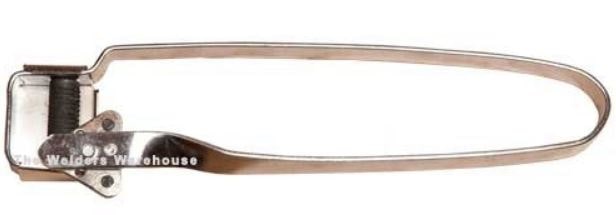
It consists of a shape edges stone piece that produces a spark when it is rubbed with a hatched cast-iron wheel. It is used for lighting the gas released from the welding torch.
#11 Try Square
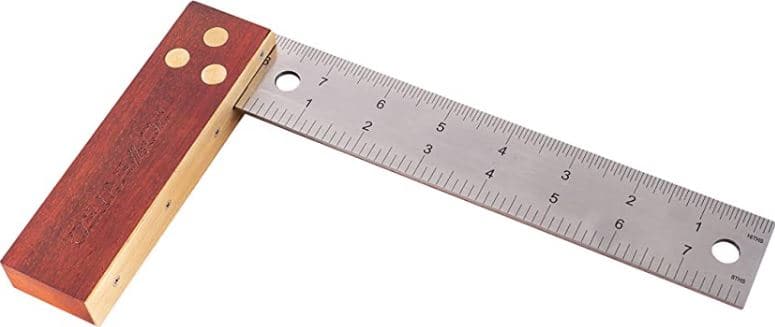
It is an L-shaped measuring instrument. Its blade is usually graduated in centimeters and the same is used for job measurement purposes. It is also used for checking the right angles of a rectangular job.
#12 Tip Cleaner
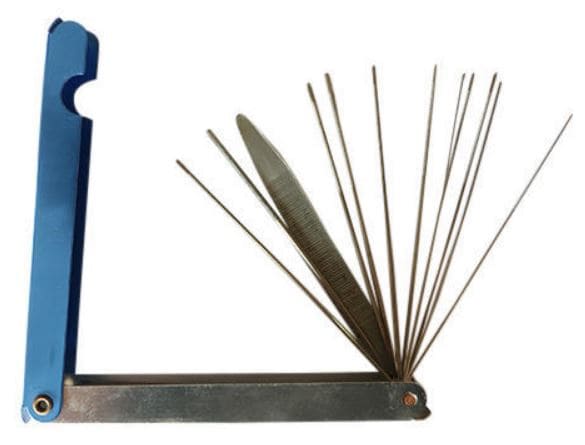
There is a fine hole in the nozzle. The hole may get dirty and even closed during use. A nozzle edges tip cleaner is used for cleaning the hole, see in the figure. A tip cleaner may also be used for removing slag from the job after welding is done.
#13 Files

These are similar to angular grinders, used to remove rough edges and burrs from the metal you cut. The file tools are available in various shapes and sizes which are used for work finishing purposes. Metal files are also commonly used for all kinds of other metal projects.
#14 Centre Punch
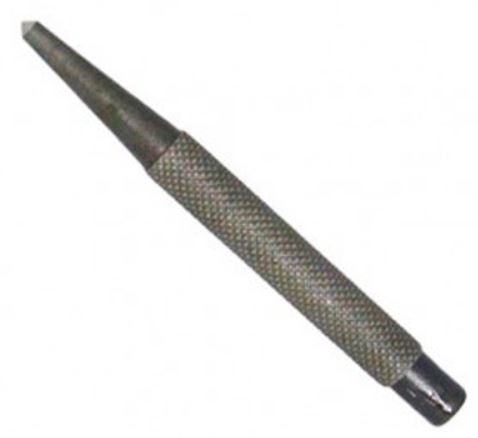
The punch tools are often used to mark holes that must be drilled in secondary operations, or as gauging marks for bend lines, shearing, spot weld locations. It is used for marking on a job piece before cutting the same into a desired shape.
#15 Scale and Weld-gauge
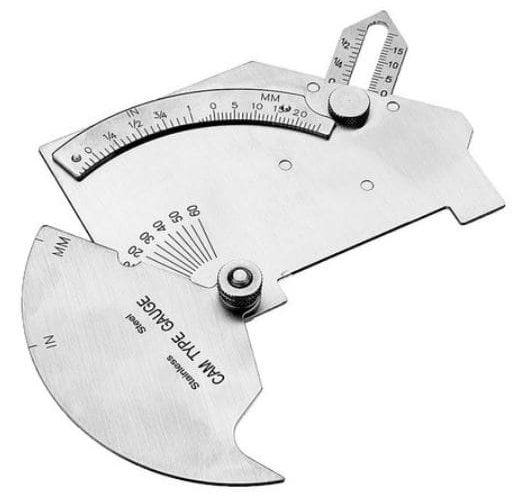
Scale is used for measuring the size of a job and the weld-gauge is used for measuring the depth of the weld, see in the figure.
#16 Steel Tape
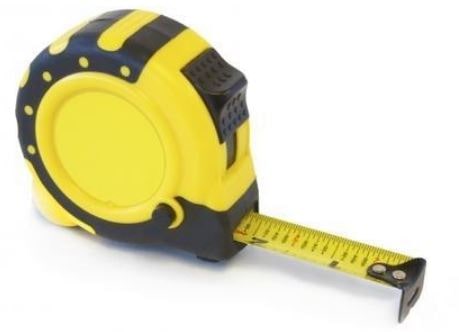
Long jobs are measured by steel tape. It is marked in inches and centimeters and it is housed in a steel or plastic case. The spring for the assembly helps in the quick and automatic collection of the tape, as seen in the figure.
Welding Equipments
The equipments used in welding are as follows:
- Gas cylinder
- Gas regulator
- Hose-pipe
- Welding goggles
- Welding Helmet
- Handy gloves
- Anvil
- Cylinder trolly
- Apron
- Welding torch
#1 Gas Cylinder
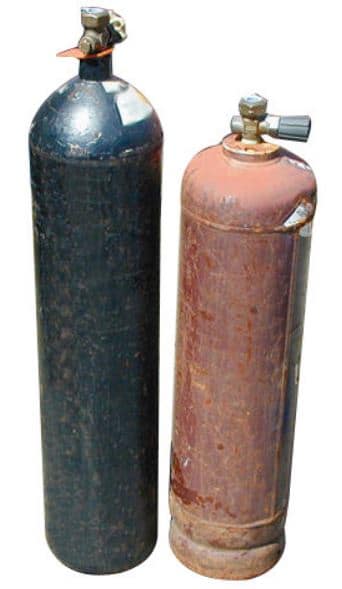
Welding gas cylinders are made with thick steel sheets as they have to bear high gas pressure. Manufacturers supply gas-filled cylinders to the users. Generally, oxygen and acetylene gas cylinders are used for gas welding purposes. The two gases are supplied in separate cylinders.
1. Oxygen Cylinder
Oxygen gas can be stored in a cylinder for a long time. The temperature of the cylinder remains 70° Fahrenheit and the gas pressure is kept at about 2200 pounds per square inch.
The Oxygen cylinder is colored to black and its valve has right-handed threads. These two points are useful in the identification of oxygen cylinders.
2. Acetylene Cylinder
The acetylene cylinder contains acetylene gas in liquid form. The temperature of the cylinder remains 70° Fahrenheit and the gas pressure is kept at about 250 pounds per square inch.
Before filling the gas, some quality of dry porous material (charcoal) and then acetone is filled in the cylinder. Now, acetylene gas is filled in the cylinder at about 250 pounds per square inch pressure and finally, the cylinder is rotated for some time.
The acetylene cylinder is colored to dark red and its valve has left-handed threads; These two points are useful in the identification of acetylene cylinders. There are also two safety valves that are mounted at the bottom of the cylinder.
Both cylinders are provided with safety caps. Acetylene cylinders should not be used in a lying position.
#2 Gas Regulator
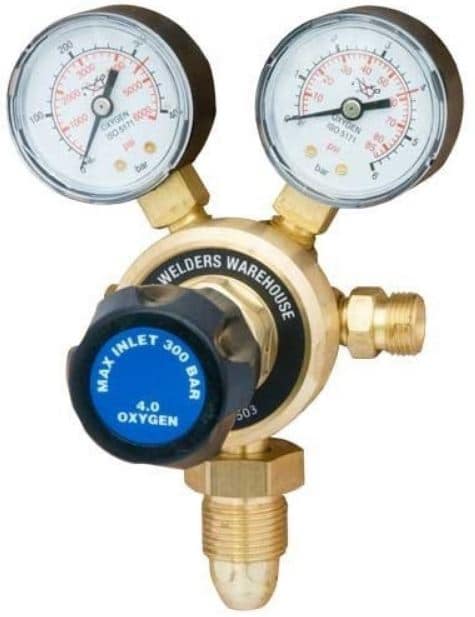
For the welding process, the oxygen and acetylene gases reach the welding torch through gas regulators. There are two main functions of a gas regulator:
- To maintain necessary gas pressure during the course of welding.
- To supply the gas to the welding torch at a low pressure. The regulator’s body is generally made of brass metal.
The gas regulator is available in two types.
1. Single Stage Regulator
It mainly consists of diaphragm, spring, control-valve, body, pressure gauge, pressure adjusting screw.
This type of regulator has two ports; (i) Inlet – through which the gas at high pressure enters the regulator from the cylinder, (ii) outlet – through which the gas at low pressure is pulled to the welding torch through the hose pipe.
The gas enters the regulator under high pressure through the inlet and exerts pressure on the diaphragm. The diaphragm is supported by a spring which is also used as a pressure adjusting device with the help of a screw.
The regulator valve and diaphragm reduce the gas pressure and supply the same to the welding torch through the hose pipe from the outlet.
2. Double Stage Regulator
In this type of regulator, the pressure of the gas is reduced from high to low in two steps. The device consists of two gas chambers i.e., the main chamber and the auxiliary chamber. The device has two springs and two diaphragms.
The gas enters the main chamber and its pressure is reduced to some extent. The gas then enters the auxiliary chamber from the main chamber at reduced pressure. Here, the gas pressure is further reduced and the same working pressure is carried through the hose pipe to the welding torch.
#3 Hose Pipe
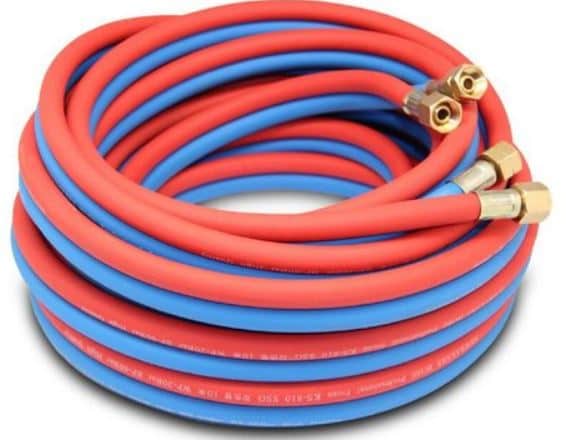
The hosepipe is the medium through which gas is supplied from the regulator to the welding torch. Separate hose pipes are used for oxygen and acetylene gases.
These are made of good quality rubber and are fitted with the help of clamps in their respective regulators and welding torches. Typically, a black or blue pipe is used for oxygen gas while a red pipe is used for acetylene gas.
#4 Welding Goggles
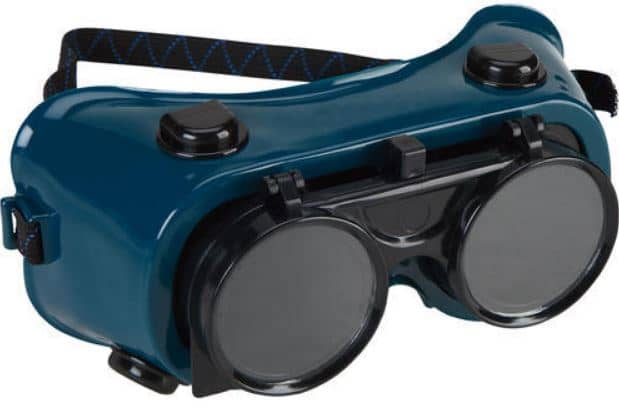
Goggles are used for the protection of eyes against any possible bad effect of the gas flame. Green or blue glasses are used in the goggles which are capable to protect the eyes from ultraviolet and infra-red radiation of the high-temperature gas flame.
#5 Welding Helmet
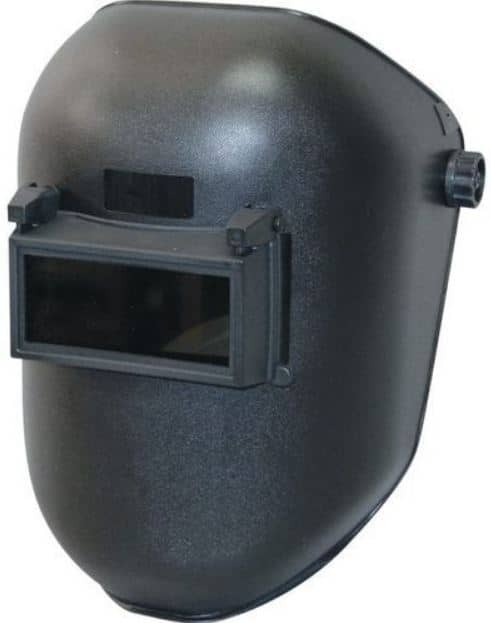
It is an essential type of welding equipment that is considered the most important piece of personal protective equipment that a welder should have. This helmet not only protects the eyes and skin from serious sparks, but also from potentially vision-damaging ultraviolet and infrared rays released by arcs.
#6 Handy Gloves
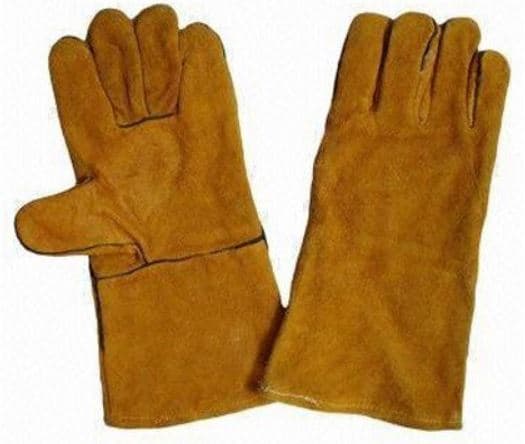
Welding gloves are tools that protect a welder’s hands from the dangers of welding. Leather or asbestos gloves are used for the protection of hands against any possible burn during welding.
These gloves allow the operator to be protected from electric shock, extreme heat, and ultraviolet and infrared radiation, and also provide abrasion resistance and increased grip.
#7 Anvil
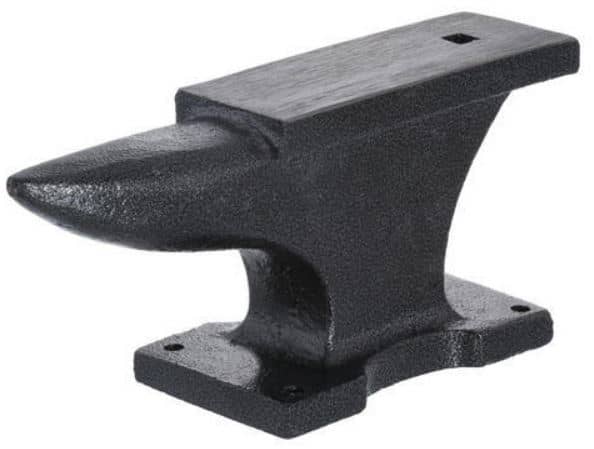
An anvil is consisting of a strong metal (usually forged or cast steel) with a flattened top surface upon which another object strikes. An anvil is used for hammering a hot job as required. It is made of steel so as to have sufficient toughness, see in the figure. The anvil is used as a forging tool in most cases.
#8 Cylinder Trolly
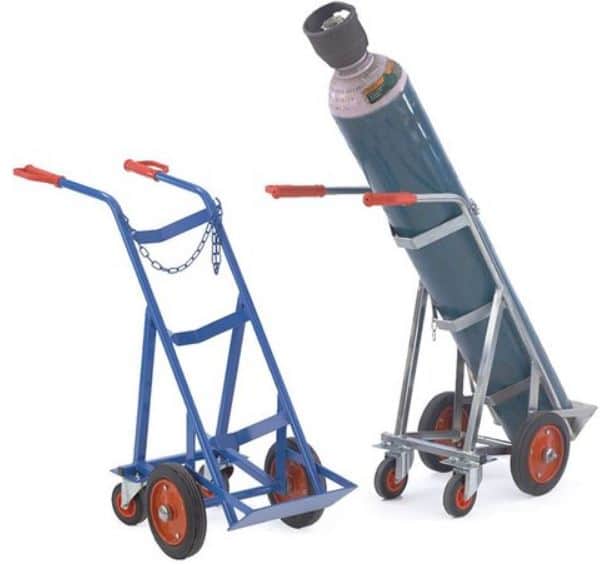
A cylinder trolly is very helpful for conveying the two gas cylinders from one place to another for gas welding purposes.
#9 Apron
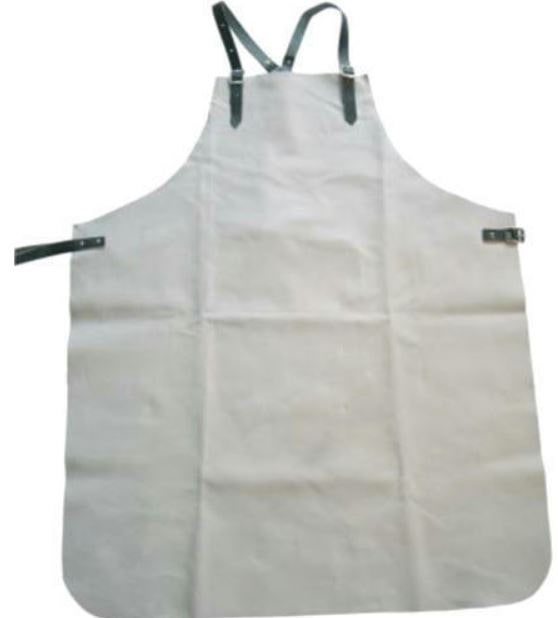
A leather apron is very useful equipment for protecting a welder’s clothing against sparks and red-hot particles. It is usually tied to the chest portion of the body.
#10 Welding Torch
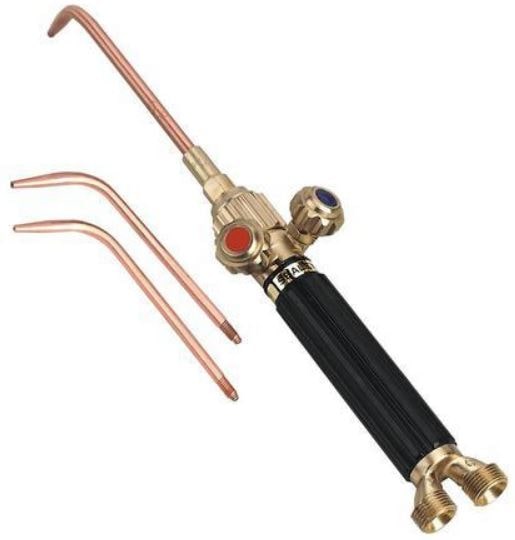
It is also known as a blow-pipe. The instrument is meant for producing the oxygen-acetylene flame. It is provided with two gas adjusting knobs (one for each gas). The desired type of flame can be produced by adjusting the two knobs. Two hose pipes are clamped on the two inlets of the instrument.
Gases are mixed in the mixing chambers and then the mixture comes out of the welding torch through its nozzle or tip where it is converted into flame with the help of a spark lighter. The nozzle or tip is made to bear the high temperatures.
Nozzle’s size depends on the size of its hole and they are replaceable. The size is marked on the nozzle which indicates the thickness of the metallic sheets to be welded with that nozzle. There are two main types of welding torches.
1. Low Pressure Welding Torch
In this type of torch, the pressure of oxygen gas is kept at about 10 to 40 pounds per square inch, while the pressure of acetylene gas is kept at about 1 to 2 pounds per square inch. The tip of this type of torch can only be replaced together with its neck.
2. Medium Pressure Welding Torch
In this type of torch, the pressure of the oxygen is kept at about 1 to 24 pounds per square inch, while the pressure of the acetylene is kept at about 1 to 15 pounds per square inch. The tip of this type of welding torch can be replaced without the replacement of its neck.
Wrapping It Up
As we discussed above, welders need these precise welding tools and equipments to have better control over the work. After reading this, you must have got an idea about how to use and when to use them. If you have any queries regarding this topic then feel free to ask in the comment section.
So now, I hope you have liked our look at the “welding tools and equipments” and found some you haven’t learned of before. If you found this article helpful, then share it with your friends.
Subscribe to our newsletter, if you want to read our latest articles first.
Download PDf of this article:
You might like to read more articles on welding:
Please give name of equipment used by welders and tools
Common tools used by welders include welding machines, electrodes, welding helmets, gloves, clamps, wire brushes, and angle grinders.
thank you for the information is very useful.
You’re welcome.
inspired. having a great information
Thanks for reading.
very informative /educative piece
Thanks for your feedback.
Love everything in here continue 💞
Sure we’ll do. Keep visiting 😉